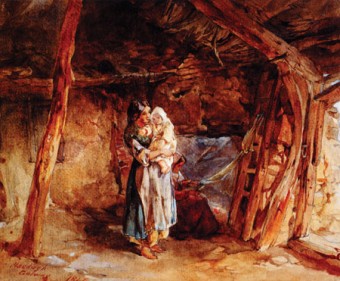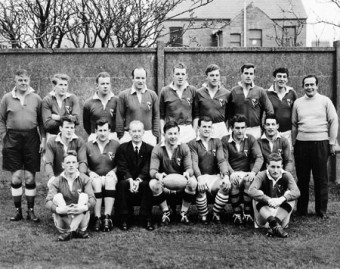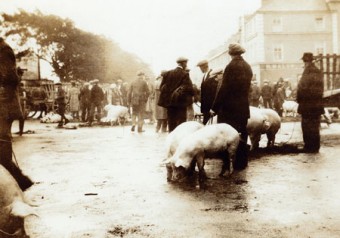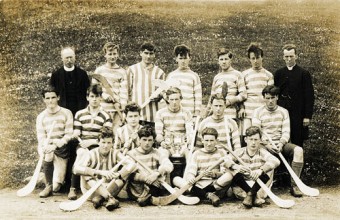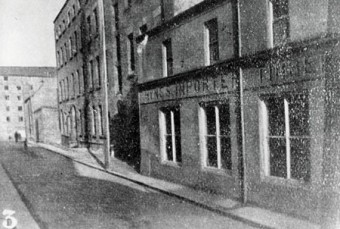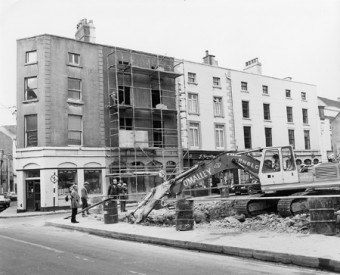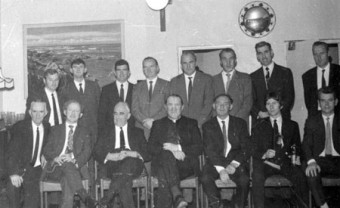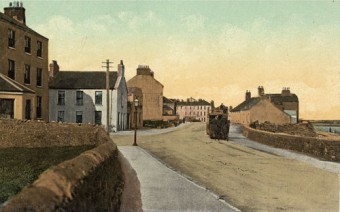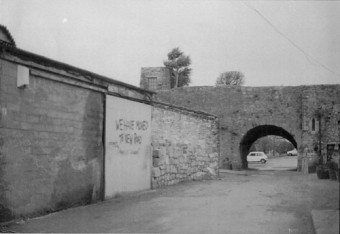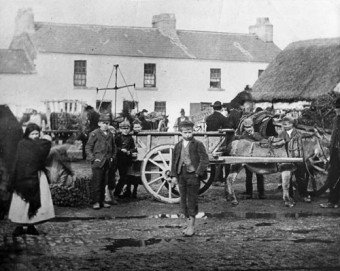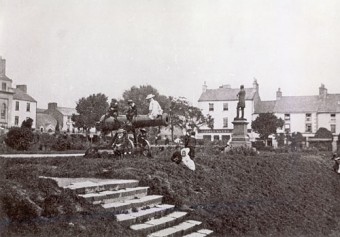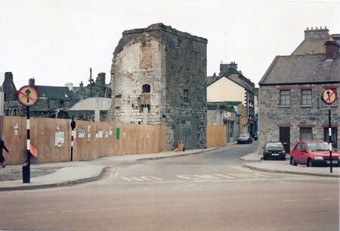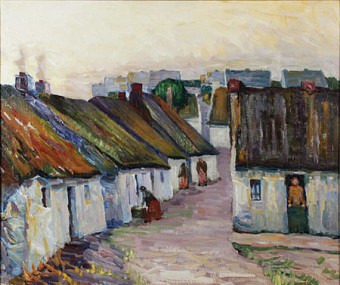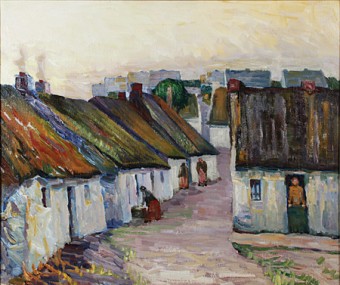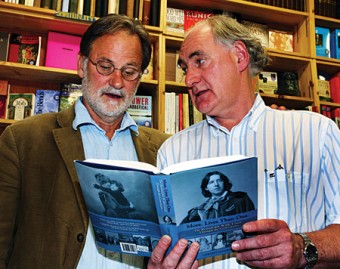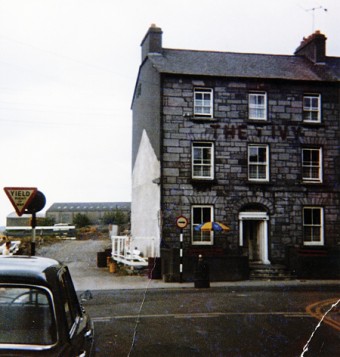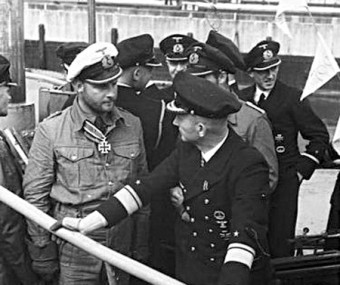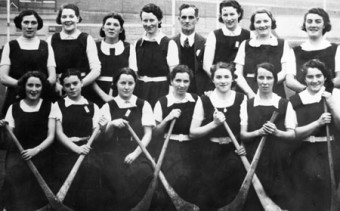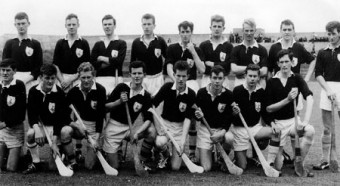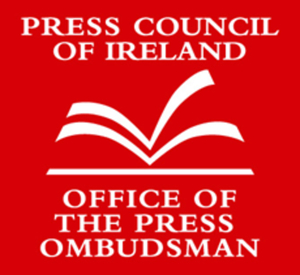Cottage interior in the Claddagh, 1844
Thu, Feb 02, 2012
This illustration is of an original pencil and watercolour painting by Francis Topham which now hangs in the Ulster Museum. It was painted in 1844, just before the Famine, and shows the interior of a cottage in the Claddagh.
Read more ...Heroes in green jerseys
Thu, Jan 26, 2012
The extraordinary heroics and the wonderful result in the Sportsground on Friday last unleashed joy unconfined and gave all Connacht rugby supporters a great lift. As Eric Elwood rightly said, “The players and the crowd got their just reward,” so we thought to honour the occasion by showing you the Connacht team that travelled to Ravenhill on November 19, 1958, and beat Ulster.
Read more ...Running a city on village lines
Thu, Jan 12, 2012
This photograph of a pig fair was taken about 100 years ago on a wet day at the top of Eyre Square. The corner we see on the right was occupied by Michael Walsh, family grocer, wine and spirit merchant, who claimed to have the most superior quality of goods always kept in stock... “A trial will convince”. In the foreground are a typical group of farmers who have travelled into town with their tall carts carrying their pigs. They have them on show with a rope tied around each animal’s leg to avoid them running all over the place. You can almost sense these farmers praying for a buyer to come along, because if they did not sell they would have to bring their pigs home again. Not all farmers had the luxury of carts, and those who walked their animals into town and did not sell, would have to walk them home again.
Read more ...St Mary’s College, almost one hundred years old
Thu, Dec 29, 2011
Our photograph today shows the St Mary’s College hurling team which won the competition played between their school, Garbally, and St Flannan’s in 1924. The diocesan magazine The Mantle published this image and provided an update on the players in 1959, so the notes after their names describe their status in 1959.
Read more ...The Vincent de Paul Society, Galway’s oldest charity?
Thu, Dec 08, 2011
Today’s photograph was taken about 100 years ago and shows part of St Augustine Street. In the foreground is Hynes’ retail shop. Hynes’ were major importers and had a yard and warehouse on the docks, so they could unload imported cargo directly from the ship across the street into the yard. The shop sold all kinds of hardware and builder’s materials. The shop has gone now and is replaced by what is known as the Hynes Building which houses the County Library and various offices.
Read more ...From drab facades to the Latin Quarter
Thu, Dec 01, 2011
This photograph was taken only 25 years ago, but it shows how much Galway has changed in that space of time, and particularly the area of High Street, Quay Street, and Cross Street.
Read more ...When Michael D was vice president
Thu, Nov 24, 2011
For some reason the game of soccer seemed to be popular with Claddagh people. In the 1930s there were at least three teams representing the area. Claddagh Rangers were playing senior soccer, the equivalent of League of Ireland today, Old Claddonians were fielding teams, and by 1937, Galway Rovers were developing a youth team as well as a junior side. In their early days Rovers had no clubhouse, though the Old Malt pub could be described as a hangout, as could the Atlanta Hotel, whose owner Josie Owens had strong connections with the club.
Read more ...The end of the tramline
Thu, Nov 17, 2011
This photograph of the sleepy village of Salthill was taken about 100 years ago. In the mid nineteenth century, the village was very small and occupied mostly by fishermen, some lodging houses and a few pubs. The area was much changed and improved by the building of the Eglinton Hotel in the mid 1860’s. This up-market establishment was on a much grander scale than any other building in the vicinity, and it attracted a different kind of tourist. It is on the left of our picture, with the small bar in front.
Read more ...The back of the arch
Thu, Nov 10, 2011
The buildings we see on the left of our photograph were once two-storey houses which featured on the 1651 map of Galway. Some years ago, in this column, we showed a painting of those houses and also the ones across the street which gave the impression of a continental atmosphere to this area. According to Griffith’s Valuation, which was published c1855, the houses on the left were occupied at that time by Dennis Quinn, Patrick Commons, and Michael Derrane, all of whom kept lodgers.
Read more ...The potato market at the Small Crane
Thu, Nov 03, 2011
This remarkable photograph of the Small Crane (Where was the Big Crane?) was taken about 1890 with the potato market in full swing. This market was held here regularly, and was an occasion where town met country. Farmers from as far west as Inverin would bring their potatoes into town to sell to shopkeepers and individuals. The scale, which was kept steady by large rocks, was used to weigh the sacks. You can see potatoes stacked loosely on the ground beside the creels.
Read more ...The Crimean cannon
Thu, Oct 27, 2011
August 3 1857 was a day of celebration in Galway as the British War Department handed over two Russian cannons to the town commissioners. These cannon were described as “64 pounders of a heavy and clumsy description, each weighing two tons”, and were part of a large amount of Russian ordnance which fell into the hands of the 88th regiment during the Crimean War. Many of these artillery pieces were presented by the War Department as trophies to cities and town across the British Isles.
Read more ...Up go those hands again for Galway
Thu, Oct 20, 2011
“Full back is Noel Tierney of sturdy proportions,
Have you ever beheld him in orbital flight
Read more ...Blake’s Castle
Thu, Oct 13, 2011
An old Galwegian gave us this interesting study of the bottom of Quay Street, and of Blake’s Castle in particular. Blake’s Cattle was one of a number featured on the 1651 map of Galway. It had at one time belonged to the O’Halloran sept, but then the Anglo-Norman Blake family took it over. It was forfeited by them in 1641 and was granted to a family named Morgan from Monksfield.
Read more ...Charles Lamb in Galway
Thu, Sep 22, 2011
Historic paintings of Galway are scarce enough so it is always good to come across them. Our image today is one of the Claddagh painted by Charles Lamb in the 1930s. It is hardly surprising that visitors, painters, poets, and novelists were attracted to this fishing village that was in Galway, but not of it. They were all fascinated by the odd assortment of thatched cottages, built at haphazard angles, with intersecting streets and lanes in which one could lose one’s way within a couple of acres. Sometimes they were built in irregular squares or circles around little greens where the young children played. The houses were very small, and while some showed signs of poverty, most were very clean and neat. The back doors of many of the houses looked into the front door of their neighbours, and though the buildings were quaint, picturesque, and romantic, modern sanitation was unknown there.
Read more ...Charles Lamb in Galway
Thu, Sep 22, 2011
Historic paintings of Galway are scarce enough so it is always good to come across them. Our image today is one of the Claddagh painted by Charles Lamb in the 1930s. It is hardly surprising that visitors, painters, poets, and novelists were attracted to this fishing village that was in Galway, but not of it. They were all fascinated by the odd assortment of thatched cottages, built at haphazard angles, with intersecting streets and lanes in which one could lose one’s way within a couple of acres. Sometimes they were built in irregular squares or circles around little greens where the young children played. The houses were very small, and while some showed signs of poverty, most were very clean and neat. The back doors of many of the houses looked into the front door of their neighbours, and though the buildings were quaint, picturesque, and romantic, modern sanitation was unknown there.
Read more ...‘Lady Betty’ and the ‘ enemy of romance’
Thu, Sep 22, 2011
In the 1820s the hangman for the Connacht circuit was a woman known as ‘Lady Betty’. She had actually been sentenced to death for killing her own son, and stealing his savings. But she escaped the hangman’s noose by pleading that she could fill the vacancy that existed for a hangman. Her first hanging was watched to see if she could handle the rough business of a public execution with some sort of expediency. Apparently she could. She was officially appointed to hang and flog those convicted in the Connacht courts.
Read more ...The Ivy Hotel
Thu, Sep 15, 2011
The Ivy Hotel in Eyre Street was known as Baker’s Hotel during the Black and Tan era. Captain Baker, who had served in the war, lived there with his daughters. A number of Black and Tans, including the infamous Krumm, lived there, and others frequented the hotel. The girls were friendly with the Tans and the local IRA took a poor view of this.
Read more ...The man who sank the SS Athenia
Thu, Sep 15, 2011
While Galway was caring for some of the survivors of the SS Athenia, torpedoed off the Donegal coast on September 3 1939, America, Britain and Canada unleashed a vitriolic attack on Germany for sinking a passenger ship. Included among her 1,418 passengers and crew were more than 300 Americans. A total of 117 people were killed, some unfortunately as they were being lifted from the sea by the rescue boats including the Knute Nelson (which had brought 430 survivors into Galway), and three British warships, the HMS Electra, HMS Fame and the HMS Escort, which had rushed to the scene. Among the dead were 28 American citizens.
Read more ...Galway camogie
Thu, Sep 08, 2011
Experimental rules for a female stick-and-ball game were drawn up in 1903, and the first public game took place in July of that year, and so the game of camogie was officially launched. Men used to play with a ‘camán’, but the women would use a shorter stick described in the diminutive form ‘camóg’. So the game was called ‘camógaíocht’ and this was anglicised to camogie. The pitches used were shorter than standard, the game lasted 50 minutes and teams were 12-a-side, using an elliptical formation of 1-3-3-3-1. In 1999 camogie moved to the normal GAA field size, teams were 15-a-side and they adopted the standard GAA butterfly formation of 3-3-2-3-3.
Read more ...Galway minor hurlers, 1965
Thu, Sep 01, 2011
Hurling is more than just a game, it is the most Irish thing we have apart from our language, a national passion which is woven deeply into the social fabric of Irish society, an icon of Irish culture, a game that is played for pride, not money.
Read more ...